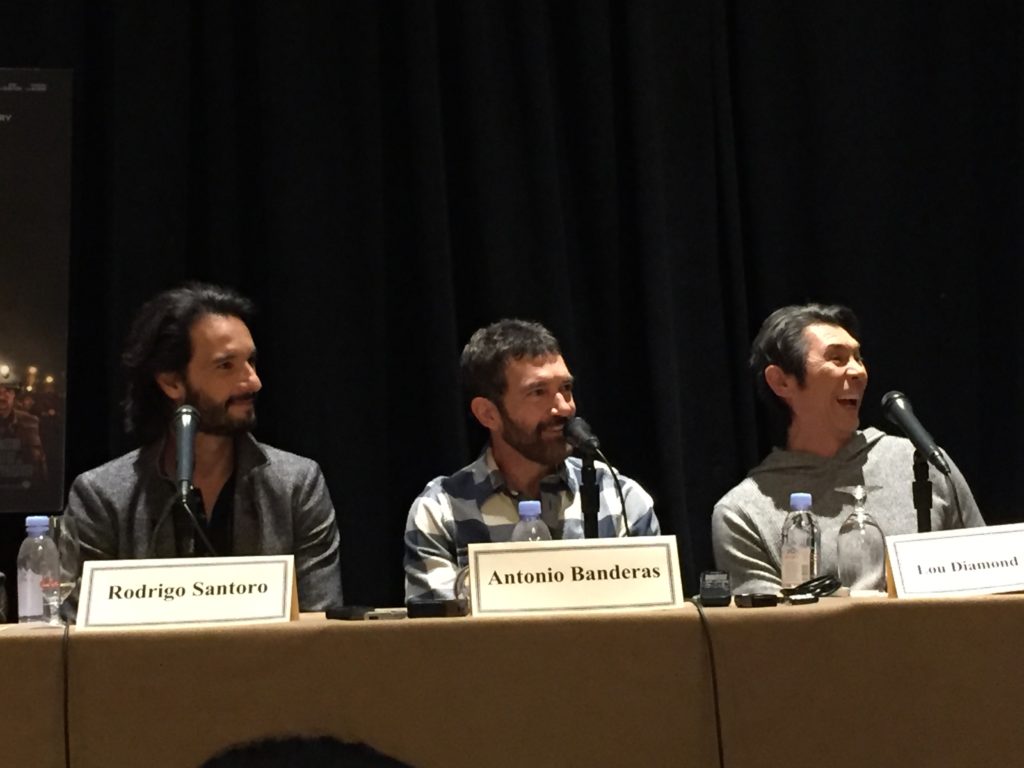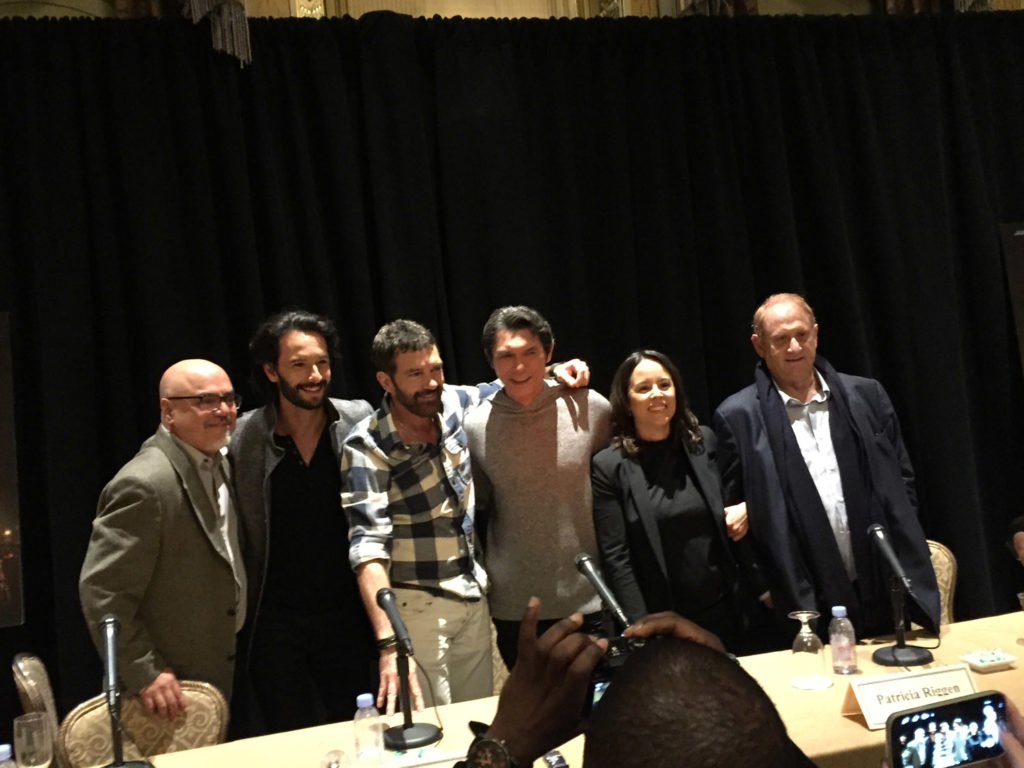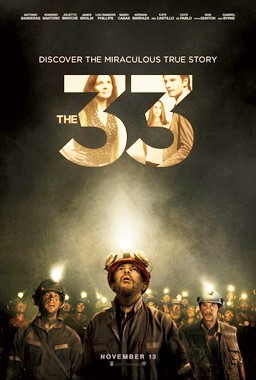On Friday, Oct. 30, I was very fortunate to attend the press conference for the upcoming film, The 33.
The press conference panel consisted of actors Antonio Banderas, Rodrigo Santoro and Lou Diamond Phillips, director Patricia Riggen, producer Mike Medavoy and author Hector Tobar, who wrote the book the film is based on.
When seeing the film the night before, I was taken aback by the power and raw emotion the film brought scene after scene. The story is a miracle and recounts the true events of the fateful 69 days in 2010 in which 33 Chilean miners were trapped 200 stories beneath the Earth’s surface and survived. I remember watching the miners being brought up to the surface one by one on CNN, but after seeing the film, I realized that I did not know any of the real story.
The film is written beautifully and recounts the tale of how 33 men survived underground with limited food, water and clean air. Before the crews that were feverishly working to find them broke through and were able to deliver food and water, the miners survived on a three day food supply for 18 days. In all honesty, I was amazed that all of the men survived that long.
I won’t spoil the rest, but there were three additional times during the film that I thought they would not make it out alive.
The film is great as well because it includes the perspective of the families that camped outside the gates of the collapsed mine. When Medavoy first toyed with the idea of the film, he wanted to make sure the families’ pivotal role was shown. “I start[ed] thinking not only about the miners, but rather about the fact that the families were there, that somebody needed to get them out,” Medavoy said.
Showing both the families and the miners added a lot of emotion to the film. However, the real emotion shined through in every actor’s performance. I was surprised to hear how passionate everyone on the panel was about making this film and wanting to keep it real. This was achieved greatly in part by the 33 miners visiting the set each day to help out. The actors spent time with their real-life counterparts, allowing them to show their emotional connection to the story on-screen.
Phillips portrays Luis “Don Lucho” Urzua, the miner in charge of keeping the others safe and alive. As the only non-Spanish speaking actor, it was hard for Phillips to communicate with Urzua. Instead of talking with him, Phillips spent most of his time watching Urzua’s body language.
“This man felt like he had the weight of the world on his shoulders. He spent his entire life in a mine. This was his life. This was his passion. This was his pride,” Phillips said. He went on to say that seeing the “quiet dignity” of Urzua’s body language was the key for successfully portraying his role.

Rodrigo Santoro, Antonio Banderas and Lou Diamond Phillips, the stars of The 33.
Photo Credit: Julia Siegel
Banderas, who played a fellow miner in the film, said that his performance was inspired by watching Mario Sepulveda’s leadership and never-give-up attitude. Banderas was also moved by all of the miners’ attitudes about the accident. “One of the things that they all say to you is that ‘we are not heroes.’ That is very important in the movie. What we see [are] human beings that make mistakes eventually,” said Banderas.
The idea of herocism was brought up again by Santoro, another actor on the panel. He felt that his character, Minister of Mining Laurence Golborne, was not a hero and did not want to portray him as a hero. Golborne told Santoro that his strength to save the miners came from the encouragement of the families, which is well showcased in the film.
Santoro also felt that there was not a standout hero in the film, but rather a collective hero. “I think there is a hero. It’s courage, strength of the miners, love, desperation, pain from the families and the presence and pressure of the media there and all these people together, the power of unity of everyone getting together to really try to get this done. So, it’s hard to say who is the hero. I don’t think there’s a hero. I think it’s much beyond that,” said Santoro.
In addition, the film seemed very real due to the acting and filming on-location. Riggen explained that the film was shot entirely in Chile for the family camp scenes and Columbia for the mine scenes. Riggen said it compared to making two films because each had different casts, crews and countries, making the shoot very challenging.
“There were no sets in this entire movie. We shot the whole movie inside a real mine. We walked 35 times into a mine [for] 14 hours a day, six days a week with all these men. We were living and working under very tough conditions of danger, of bad air, no food, no bathrooms, no nothing down there. It is the real thing,” said Riggen.
Lastly, the film ends by giving a brief update on the miners. This revealed that they were never compensated for the accident. It was appalling to hear that these men who almost lost their lives were given nothing in return.
Riggen and Medavoy both felt that they could not do the film without having the miners involved. They made all 33 men a part of the film contract to allow them to be compensated fairly for their story. It was relieving to hear that, five years later, the men are finally getting some money out of their tragedy, especially because most are still very poor and cannot get mining jobs due to their fame.
Overall, I encourage everyone to see this inspiring film. It is truly touching and powerful. You cannot understand what happened unless you actually take the time to see it. The 33 hits theaters nationwide on Friday, Nov. 13.





